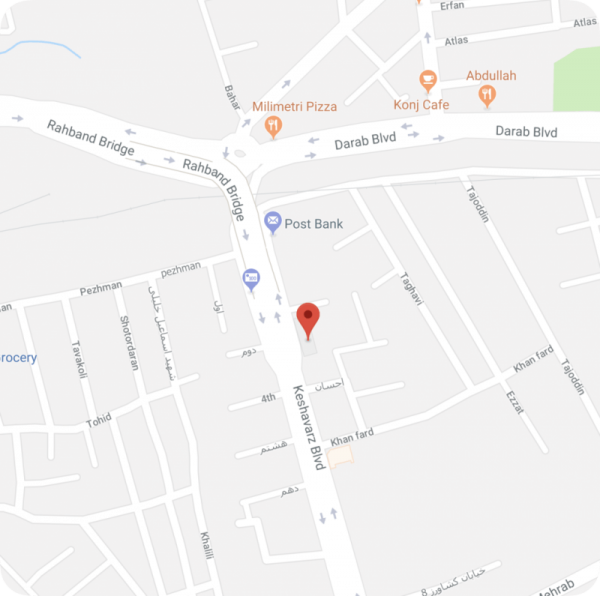Metabolic
We are pleased to announce that this laboratory has been equipped with advanced LCMS / MS and GCMS devices since 1992 and is ready to provide services in metabolic disease screening tests.
What is screening?
Screening refers to the ways in which seemingly healthy people who are at higher risk for developing a particular disease can be identified as healthy people. It should be noted that in people who are considered high-risk, additional tests should be performed for a definitive diagnosis. In many countries today, neonatal screening programs are widely performed using a few simple tests on the baby’s blood.
Why should these tests be done?
Neonatal screening is used for the early detection of very dangerous congenital diseases. If these diseases are not diagnosed in time, they can cause mental retardation, stunted physical growth, and even death.
History of Neonatal Screening
The first neonatal screening program began in the United States about half a century ago, and today in at least 70 countries, infants are required to be tested for hypothyroidism and atherosclerosis, at least by law.
In Iran since 2002 in Fars province all infants were screened for three diseases: hypothyroidism, phenylketonuria, and deficiency of G6PD (a cause of favism), and gradually since the beginning of 2006 two other diseases, namely increased galactose and disease Maple syrup (MSUD) was also added to the collection.
When should screening tests be performed?
Tests used in screening programs should be performed before the baby is discharged from the hospital or during the first 5 days after birth.
How is sampling done?
After warming the baby’s foot and cleaning the area with a special disinfectant, using a special needle (lancet) that is inserted into the heel of the baby’s foot, a few drops of blood are collected on a special filter paper, and after 3 Dry at room temperature for up to 4 hours.
How are the results interpreted?
If the result of the test is abnormal, it does not mean that the baby is necessarily ill, but it means that additional tests should be performed on the baby’s blood and also consulted by a pediatrician, and then if the disease is confirmed, treatment should be started immediately. The method of treatment depends on the type of disease and includes special diets and medication.
What diseases are screened for?
The composition of the diseases present in neonatal screening schemes varies in different parts of the world. The proposed scheme currently includes six diseases:
1) Congenital hypothyroidism: This disease reduces the level of thyroid hormones and as a result causes severe physical and mental retardation. Early diagnosis and medication will prevent any problems and the baby will continue to grow normally.
2) Phenylectonuria: Phenylalanine is one of the most important and essential amino acids in the body. The genetic defect of enzymes that cause the consumption of phenylalanine in the metabolic cycle increases its level in the body and its appearance in the urine. If left untreated, high levels of phenylalanine can damage brain tissue and lead to mental retardation. Early diagnosis and treatment with special diets will help the child grow normally.
3) Increased galactose (galactosemia): Children with this disease will not be able to use the sugar in milk (galactose) due to a genetic defect in the production of certain enzymes. As a result, blood galactose levels rise and can cause cataracts and severe liver and brain damage. The first sign of this is prolonged and severe vomiting, and if left untreated, it can lead to very dangerous complications.
4) Congenital adrenal hyperplasia: In this disease, the body is unable to produce the hormone cortisol, and this deficiency causes physical and mental retardation as well as boyish traits in girls. Early diagnosis and treatment of the disease prevent these complications.
5) Maple syrup disease: The cause of this disease is a congenital disorder in the absorption and use of several types of amino acids. As a result, the level of these amino acids in the blood increases and gives the body fluids, including urine, a smell similar to that of burnt sugar or maple sap. Accumulation of these amino acids leads to severe mental retardation and even death.
6) G6PD deficiency (favism disease): In this disease, one of the important enzymes of red blood cells is reduced and as a result, red blood cells are destroyed after consuming oxidants such as some drugs and beans. The patient quickly develops severe anemia with shock, lethargy, and lethargy, and the disease in infants can prolong the course of jaundice.
7) Metabolic diseases
What is the prevalence of these diseases in Iran?
The prevalence of congenital hypothyroidism is 1 in 3,500, phenylketonuria is 1 in 14,000, galactose is 1 in 40,000, maple syrup is 1 in 200,000, adrenal hypertrophy is 1 in 10,000 and G6PD deficiency is more than 1 in 100.
In this section, screening tests relate to three types of disorders, including fatty acid oxidation disorders, amino acid disorders, and organic acids, which are more than 42 analytes.
Click the button below to view the tests:
سازمان های طرف قرارداد
آزمایشگاه فجر ساری برای رفاه حال بیماران عزیز با بیش از 20 شرکت بیمه طرف قرداد میباشد





